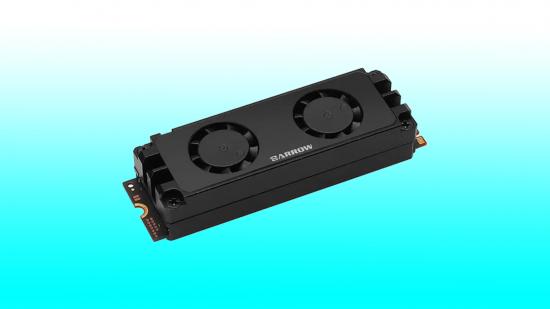Solid state drive heatsinks are becoming a norm, but future SSD drives might require the same fan cooling setup as your graphics card. In a blog post, the Taiwanese electronics company Phison highlights the importance of keeping high-speed storage cool and how high temperatures can affect drive performance.
According to Phison’s chief technical officer, Sebastien Jean, heatsinks should be enough to keep PCIe Gen5 SSDs cool, but says we’ll eventually “need to have a fan that’s pushing air right over the heatsink, too.” The company has since removed Jean’s comments from the blog, but it still says that proceeding generations of drives may require robust cooling mechanisms further down the line.
Jean also suggests that Gen5 could mark the end of the road for the M.2 PCIe connector standard, as bottlenecks hamper potential max SSD speeds. Adopting a new connection type might also mitigate the need for both a heatsink and a fan, as it’ll allow for heat dissipation through motherboard conduction while boosting signal integrity.
SSD tech helped the industry move away from mechanical hard drives, but it looks like drives could feature spinning parts again someday soon. Naturally, this could make our future rigs even more ravenous for power, especially if Nvidia’s GeForce RTX 4090 GPU guzzles 600W of power on its own.
Hyperdrive: Check out the best SSD for gaming
That said, the need for separate SSD cooling isn’t necessarily a bad thing, as it’ll likely usher in blistering speeds and benefit gaming PC performance. Innovations like Nvidia’s BaM technology also benefit from advanced drive specs, as it will enable GPUs to access storage without using your CPU as a middle man.
